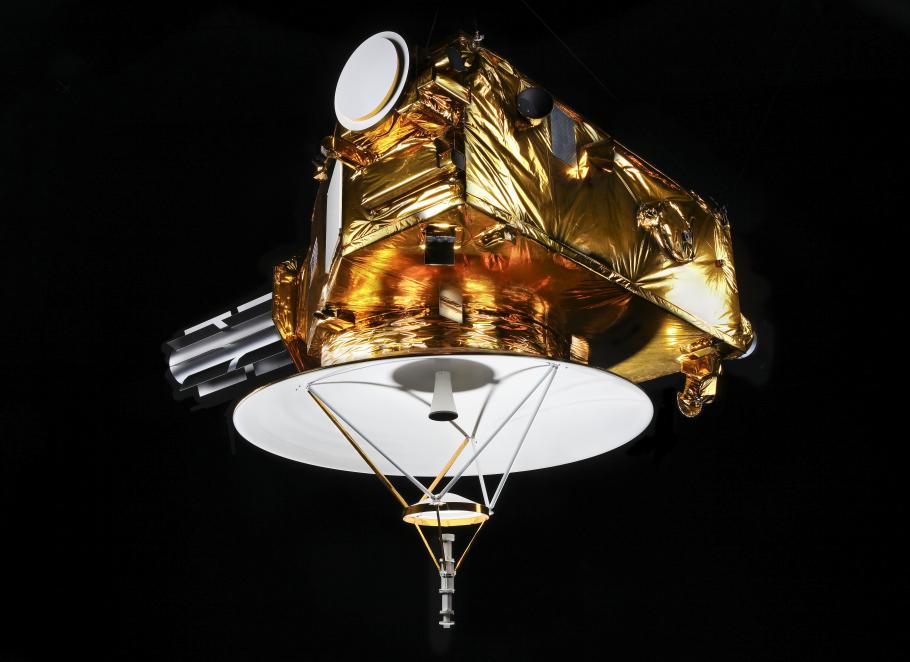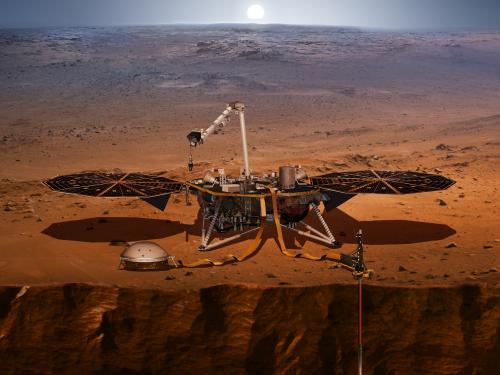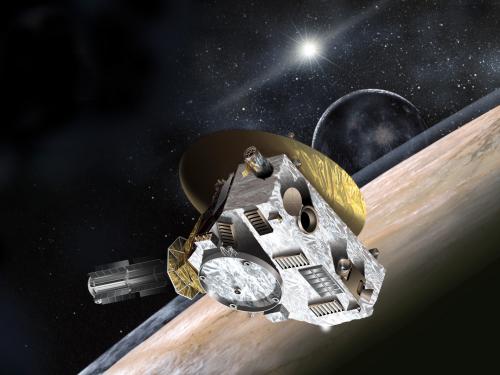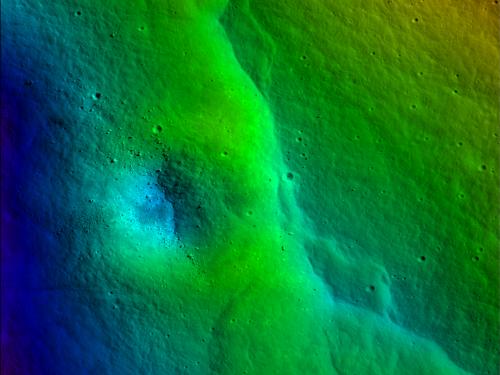6 Images
New Horizons will be the first spacecraft to visit Pluto and the Kuiper Belt in the outer solar system. It was launched aboard an Atlas V rocket from Cape Canaveral Air Force Base, Florida, on January 19, 2006, and conducted a Jupiter flyby 13 months later to gain further acceleration. New Horizons will make its closest approach to Pluto on July 14, 2015.
The half-ton spacecraft contains scientific instruments to map the surface geology and composition of Pluto and its three moons, investigate Pluto's atmosphere, measure the solar wind, and assess interplanetary dust and other particles. After it passes Pluto, controllers plan to fly the spacecraft by one or two Kuiper Belt objects. New Horizons carries several souvenirs from Earth, including some of the remains of Clyde Tombaugh (1906-1997), discoverer of Pluto, and a piece of SpaceShipOne.
The Johns Hopkins University Applied Physics Laboratory donated this to the Museum in 2008.
Display Status
This object is not on display at the National Air and Space Museum. It is either on loan or in storage.
Object Details
Key Accomplishment(s)
First Spacecraft to Explore Pluto
Brief Description
New Horizons is the first spacecraft to explore Pluto, its moons, and the icy bodies of the Kuiper Belt. It launched in 2006 and arrived at Pluto in the summer of 2015.
Country of Origin
United States of America
Type
MODELS-Uncrewed Spacecraft & Parts
Dimensions
3-D: 274.3 × 213.4 × 198.1cm, 210.9kg (9 ft. × 7 ft. × 6 ft. 6 in., 465lb.)
Materials
Wood, mylar, and plastics
Alternate Name
New Horizons (Full-Scale Model)
Inventory Number
A20080394000
Credit Line
Gift of John Hopkins University, Applied Physics Laboratory
Data Source
National Air and Space Museum
Restrictions & Rights
Open Access (CCO)
For more information, visit the Smithsonians Terms of Use.






